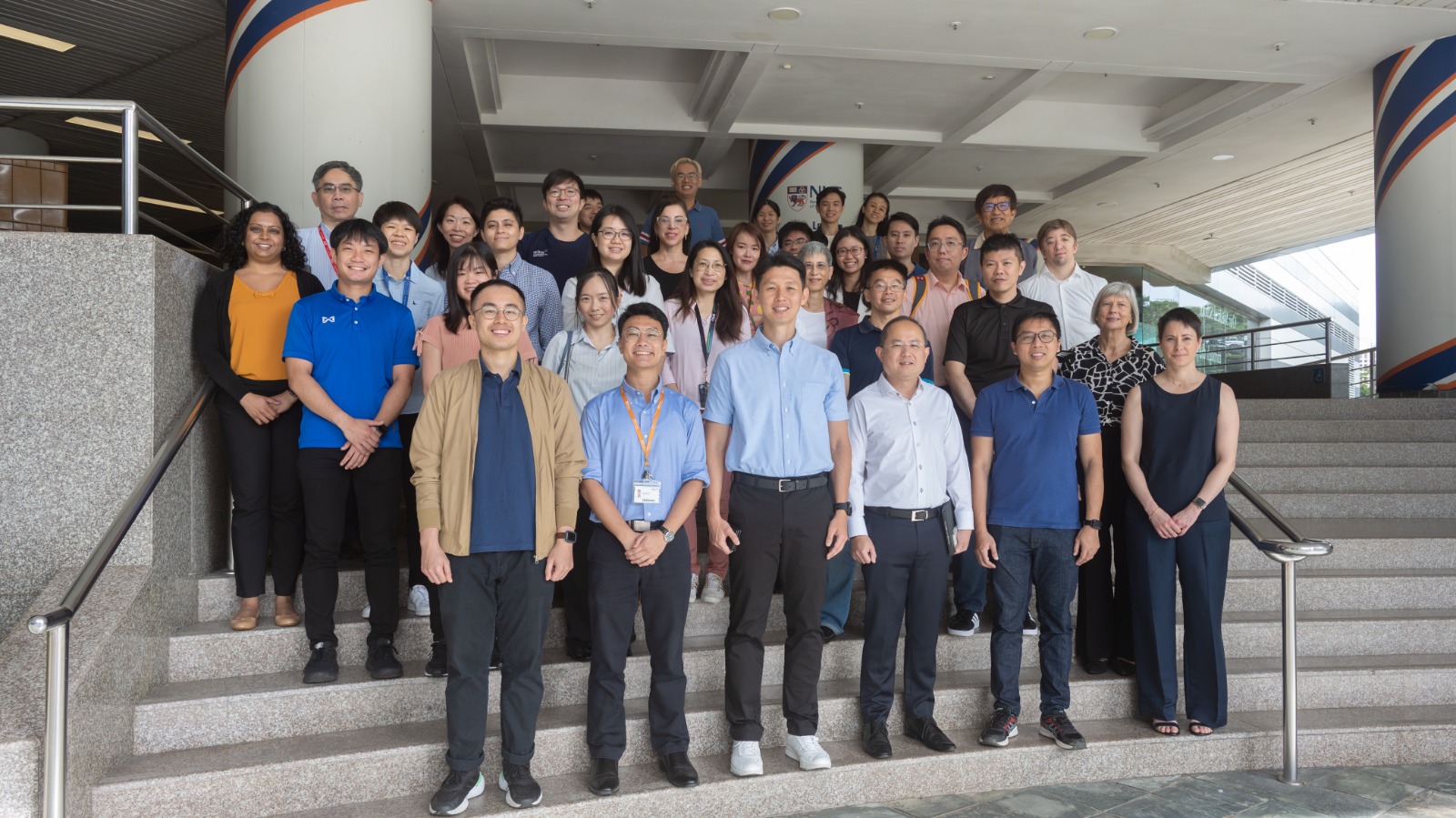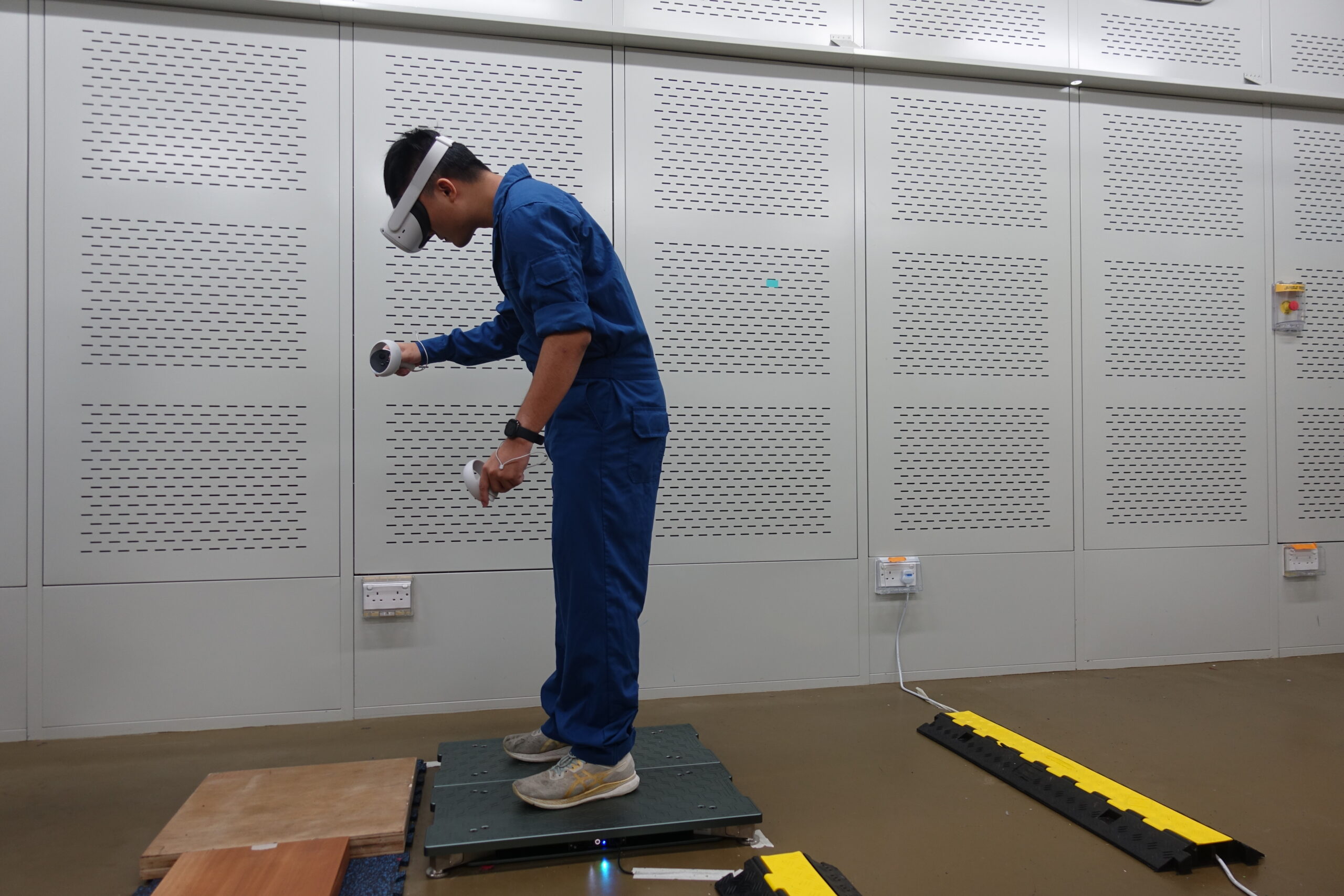Heat stress causes lower fertility, productivity and reduced cognitive capacity: Project HeatSafe
Published: 19 Mar 2024
 A group photo of the team behind Project HeatSafe.
A group photo of the team behind Project HeatSafe.
How much of an impact and influence does heat stress have on one’s health, work productivity and even the economy?
Led by Lead Principal Investigator Associate Professor Jason Lee, Deputy Director of the Human Potential Translational Research Programme (HPTRP), and Director of the Heat Resilience and Performance Centre at the Yong Loo Lin School of Medicine, National University of Singapore (NUS Medicine), Project HeatSafe is the first large-scale study in Singapore and the region aimed at investigating the impact of rising heat levels on the health, productivity and well-being of occupational workers in tropical climates such as Singapore, on an individual level, as well as the impact of heat stress on a macroeconomic and national level.
The findings from Project HeatSafe give a multi-faceted perspective of how heat stress, will lead to detrimental impacts and consequences on the individual, from compromised decision-making, cognitive capacities and productivity, to affecting one’s health and well-being such as fertility and pregnancy outcomes, as well as on a macroeconomic scale, specifically labour and economic productivity.
The different research studies which make up Project HeatSafe can be found below:
Environmental Monitoring at Workplaces  The team used an environmental logger to measure WBGT.
The team used an environmental logger to measure WBGT.
In a study of 24 indoor and outdoor workplaces, WBGT monitors were placed at workplaces around the island to measure the hourly WBGT and compared the readings against the hourly WBGT captured at the nearest weather stations.
They focused on the hourly timepoints during working hours, from 7am to 7pm.
Notably, the consistency of measurement between WBGT heat stress risk levels at the weather station and at the workplace declined with increasing heat stress.
This observation is significant, as workers could be exposed to higher heat stress levels at the workplaces than what is reported by the NEA weather stations. If unmonitored, the workers could be unduly exposed to heat for long periods and succumb to heat strain.
Impact of heat stress on health, well-being and productivity
Through surveys with 355 workers and 214 employers in Singapore, the team found that the higher the physical and mental exertion faced in the job role, the higher the productivity and economic losses.
It is estimated that for every hot day, the reduced workers’ productivity during working hours (i.e., presenteeism) translates into a median income loss of S$21 per worker, which is about 24% of the daily median salary of the surveyed workers.
Impact of heat stress on cognitive capacity and decision-making  A participant completing a welding simulation task using a virtual reality headset in the climatic chamber.
A participant completing a welding simulation task using a virtual reality headset in the climatic chamber.
Using a Virtual Reality task, 18 healthy men were tasked to complete welding and plank-walking, tasks typically executed at construction sites under three different WBGT – 25 degree Celsius, 28 degree Celsius and 32 degree Celsius.
A combination of high body core temperature, high skin temperature and increased heart rate, causes a reduction in postural balance during attention-demanding tasks, which can lead to reduced productivity and cognitive capacity, resulting in impaired decision-making and a higher risk of injury.
Impact of heat stress on indoor and outdoor construction workers
79 indoor and 76 outdoor construction workers were profiled during a 9-hour work shift and interviewed on their work experiences and perceptions of heat stress.
It was found that both indoor and outdoor construction workers experienced low physiological strain overall, despite varying WBGT levels, likely due to the ability to self-pace. However, some workers displayed prolonged high thermal strain, specifically a body core temperature above 38 degree Celsius.
Impact of chronic extreme heat on fertility and pregnancy outcomes in Singapore
From analysing sperm samples from 818 men, there was a higher risk of low sperm concentration and low sperm count in men who were exposed to extreme heat 15 to 69 days before their semen was collected.
The team also analysed birth records of over 30,000 mothers over the three pregnancy trimesters for risk of pre-term birth and small-for-gestational age birth.
There is also a lower risk of preterm birth for women exposed to extreme heat at their third trimester of pregnancy. For women at their second trimester of pregnancy, there is lower risk of small-for-gestational-age birth in Chinese women, but a higher risk in Malay women.
Macroeconomic impact of heat on labour productivity losses of industries
This study evaluated the macroeconomic impact of heat on labour productivity among the 42 industries of the Singapore economy, classified into four big sectors – services, manufacturing, agriculture, and construction.
In 2018, the total average annual percentage reduction in productive working time due to heat in all four sectors was on average 11.3%, which caused a total economy-wide output loss of S$1.18 billion. This percentage is forecasted to increase to 14% in 2035, causing an economy-wide output loss of S$2.22 billion.
Click here to read the media release and for more details of the respective research findings.

 A group photo of the team behind Project HeatSafe.
A group photo of the team behind Project HeatSafe. The team used an environmental logger to measure WBGT.
The team used an environmental logger to measure WBGT. A participant completing a welding simulation task using a virtual reality headset in the climatic chamber.
A participant completing a welding simulation task using a virtual reality headset in the climatic chamber.